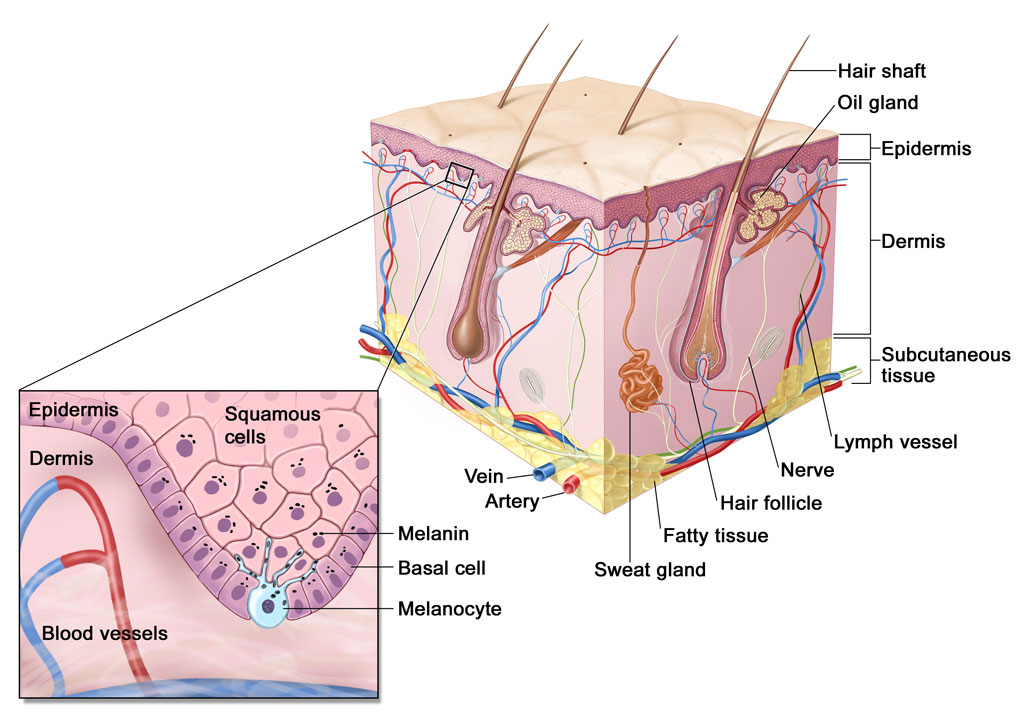MOLECARE ORMUZ AVENUE
Understanding skin
Our skin covers our entire body. It is the largest organ of our body with a surface area of about two square metres and accounting for around sixteen percent of our body weight.
Our skin serves the important functions of enabling us to sense our environment through nerve endings, physically protecting us from the environment (imagine walking around with no skin on!), keeping our body moisture in, and keeping our body temperature regulated by conserving or dissipating heat through fat insulation and the coordinated action of blood vessel dilatation and sweat glands.
Our skin has three main layers:
-
the epidermis is the outer layer and is being constantly ‘rubbed-off’ and renewed. The epidermis contains the squamous cells, basal cells and melanocyte cells.
-
the dermis is the middle layer and provides most of the structural strength to our skin. The dermis is predominantly made up of fibroblast cells which produce collagen and elastin fibres. This network of structural and elastic fibres provides support and elasticity for the epidermis (outer skin layer) and also supports the accessory structures of our skin, including hair follicles, sebaceous (oil) glands, sweat glands, nerve endings, blood vessels and lymphatic vessels.
-
the subcutaneous tissue is the deepest layer and provides insulation and shock-absorbing properties to our skin. The subcutaneous layer contains fat cells, nerves, glands, blood and lymph vessels.
Photo & information source: http://www.loudouncenterforplasticsurgery.com/skin-anatomy/
Previous – The most common skin cancers Next – Why skin type matters




